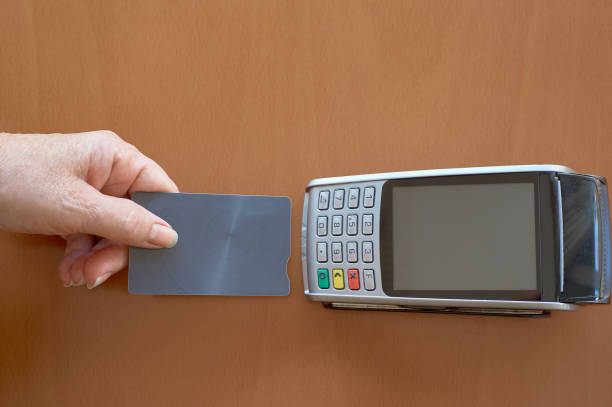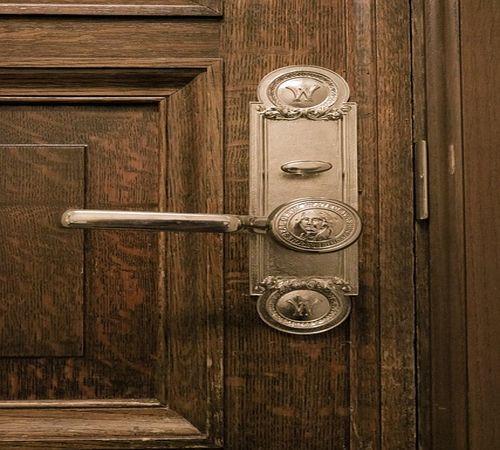Introduction
In today’s tech-driven world, business cards have evolved from traditional paper formats to innovative digital solutions. Two popular modern alternatives are NFC business cards and digital business cards. While both aim to streamline networking and improve information sharing, they use different technologies and cater to varying user preferences. This article explores the differences between NFC and digital business cards, helping you decide which one aligns best with your professional needs.
What is an NFC Business Card?
Definition and Features
An NFC (Near Field Communication) business card is a physical card embedded with an NFC chip that allows for wireless data transfer. When tapped against a compatible smartphone, the card instantly shares contact information, links, or multimedia content without the need for additional apps.
How NFC Technology Works
NFC technology uses electromagnetic fields to enable communication between two devices within close proximity (usually a few centimeters). When a smartphone comes into contact with the NFC chip embedded in the card, it triggers an action such as opening a website, downloading a file, or saving contact details.
Key Features:
- Requires no app for basic use.
- Instant and seamless sharing of information.
- Customizable links and multimedia.
- Durable and reusable.
What is a Digital Business Card?
Definition and Features
A digital business card is an entirely online solution that allows users to share their professional details via a web link, QR code, or app. These cards often exist as part of digital platforms and can be shared through email, messaging apps, or social media.
How Digital Business Cards Work
Digital business cards are created using platforms or apps that host your information on a cloud-based server. You can share your card by sending a link, displaying a QR code for others to scan, or embedding it into your email signature.
Key Features:
- Accessible across multiple devices.
- Fully customizable with multimedia elements.
- No physical card required.
- Often includes analytics and tracking features.
Key Differences Between NFC and Digital Business Cards
Technology Used
- NFC Business Cards: Use near-field communication technology embedded in a physical card.
- Digital Business Cards: Operate entirely online, relying on cloud-based platforms.
Accessibility
- NFC Business Cards: Require the recipient to have an NFC-enabled device.
- Digital Business Cards: Accessible via any device with internet connectivity, no special hardware needed.
User Experience
- NFC Business Cards: Provide a tactile experience and instant sharing without needing to type or scan anything.
- Digital Business Cards: Offer greater flexibility in sharing across email, messaging apps, or social platforms.
Cost and Setup
- NFC Business Cards: Higher upfront cost due to physical card production but reusable.
- Digital Business Cards: Typically subscription-based or free with basic features.
Compatibility
- NFC Business Cards: Limited by the availability of NFC technology on the recipient’s device.
- Digital Business Cards: Universally compatible as long as the recipient has internet access.
Advantages of NFC Business Cards
- Instant Sharing: Tap-and-go functionality eliminates the need for manual input or scanning.
- Durability: Made from materials like plastic or metal, NFC cards are long-lasting.
- Professional Appeal: The physical presence of a card adds a personal touch.
- Offline Capability: Shares data without requiring internet connectivity.
- Sustainability: A single card can replace thousands of paper business cards over time.
Advantages of Digital Business Cards
- Versatility: Easily updated and shared through multiple channels.
- Low Cost: Minimal setup fees, often free options available.
- Analytics: Track who views your card and how they interact with your information.
- Environmentally Friendly: No physical materials are needed.
- Customizability: Incorporate videos, logos, and personalized URLs.
Use Cases for NFC Business Cards
- Networking Events: Share your details quickly without disrupting conversations.
- Client Meetings: Impress clients with a modern, tech-savvy approach.
- Retail and Hospitality: Offer promotional links or surveys directly to customers.
- Healthcare: Share appointment details or patient resources instantly.
Use Cases for Digital Business Cards
- Remote Work: Share your card seamlessly during virtual meetings.
- Email Marketing: Embed your card in email signatures for broader reach.
- Social Media Campaigns: Use your card as a landing page for ads.
- Recruitment: Share resumes and portfolios directly through your card.
Choosing the Right Option for Your Needs
When deciding between NFC and digital business cards, consider your specific goals and audience.
- Opt for NFC Business Cards if:
- You frequently attend in-person networking events.
- You want a tangible card with advanced sharing capabilities.
- Your audience uses NFC-compatible devices.
- Opt for Digital Business Cards if:
- You prefer an entirely online solution.
- You have a remote or international audience.
- You value analytics and detailed tracking.
For some professionals, a combination of both might be the ideal solution—using NFC cards for physical interactions and digital cards for online sharing.
Conclusion
Both NFC digital business cards bring unique advantages to the table, transforming how professionals connect in a modern world. NFC cards stand out for their instant sharing and tactile appeal, while digital cards excel in versatility and reach. By understanding their differences, you can make an informed choice that elevates your networking game and aligns with your professional goals.
Also Read
- ► Guide for 2 Days Sunrise Trip to Taj Mahal from Jaipur
- ► 10 Essential Tips for First-Time Pet Owners in Pakistan
- ► How to Choose the Right Bathroom Contractor
- ► 7 Reasons to Choose a Taxi from Reading to Gatwick Airport
- ► Your Guide to the Best Embroidery Digitizing Services in the USA
- ► Choosing Hope: Nasha Mukti Kendra in Ghaziabad
- ► Why Do Aluminium Glass Doors Shine in Modern Kitchens?
- ► Why Are Walk-In Showers a Great Choice for Modern Homes?
- ► How Can I Measure the Success of My Campaigns with an Email Marketing Agency Near Me?
- ► Best Cow Milk Delivery Options in Chennai
- ► 5 Reasons Your Business Needs Large Format Prints
- ► Adding Greenery: How to Incorporate Plants into Your Feature Wall Design
- ► The Power of Life-Saving Drugs in Modern Healthcare
- ► Elevate Your Corporate Event with These Balloon Arch Ideas
- ► Breaking the Chains of Addiction: Nasha Mukti Kendra in Ghaziabad





